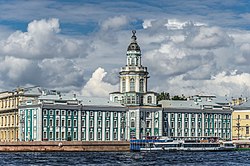

Saint Petersburg has long been a leading center of science and education in Russia and houses the following institutions:


Saint Petersburg has long been a leading center of science and education in Russia and houses the following institutions:
| | This section needs expansion. You can help by adding to it. (May 2016) |
International schools serving foreign expatriates: